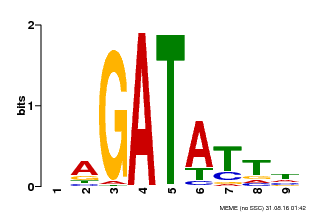- Pokhilko A,Mas P,Millar AJ
Modelling the widespread effects of TOC1 signalling on the plant circadian clock and its outputs.
BMC Syst Biol, 2013. 7: p. 23
[PMID:23506153] - Kim Y, et al.
Balanced nucleocytosolic partitioning defines a spatial network to coordinate circadian physiology in plants.
Dev. Cell, 2013. 26(1): p. 73-85
[PMID:23830866] - Karayekov E,Sellaro R,Legris M,Yanovsky MJ,Casal JJ
Heat shock-induced fluctuations in clock and light signaling enhance phytochrome B-mediated Arabidopsis deetiolation.
Plant Cell, 2013. 25(8): p. 2892-906
[PMID:23933882] - Higham CF,Husmeier D
A Bayesian approach for parameter estimation in the extended clock gene circuit of Arabidopsis thaliana.
BMC Bioinformatics, 2013. 14 Suppl 10: p. S3
[PMID:24267177] - Ding Y, et al.
Four distinct types of dehydration stress memory genes in Arabidopsis thaliana.
BMC Plant Biol., 2013. 13: p. 229
[PMID:24377444] - Qian H, et al.
The circadian clock gene regulatory module enantioselectively mediates imazethapyr-induced early flowering in Arabidopsis thaliana.
J. Plant Physiol., 2014. 171(5): p. 92-8
[PMID:24484962] - McClung CR
Wheels within wheels: new transcriptional feedback loops in the Arabidopsis circadian clock.
F1000Prime Rep, 2014. 6: p. 2
[PMID:24592314] - Gulledge AA,Vora H,Patel K,Loraine AE
A protocol for visual analysis of alternative splicing in RNA-Seq data using integrated genome browser.
Methods Mol. Biol., 2014. 1158: p. 123-37
[PMID:24792048] - Hsiao AS, et al.
Gene expression in plant lipid metabolism in Arabidopsis seedlings.
PLoS ONE, 2014. 9(9): p. e107372
[PMID:25264899] - Xing H, et al.
LNK1 and LNK2 recruitment to the evening element require morning expressed circadian related MYB-like transcription factors.
Plant Signal Behav, 2015. 10(3): p. e1010888
[PMID:25848708] - Litthauer S,Battle MW,Lawson T,Jones MA
Phototropins maintain robust circadian oscillation of PSII operating efficiency under blue light.
Plant J., 2015. 83(6): p. 1034-45
[PMID:26215041] - Flis A, et al.
Defining the robust behaviour of the plant clock gene circuit with absolute RNA timeseries and open infrastructure.
Open Biol, 2016.
[PMID:26468131] - Adams S,Manfield I,Stockley P,Carré IA
Revised Morning Loops of the Arabidopsis Circadian Clock Based on Analyses of Direct Regulatory Interactions.
PLoS ONE, 2015. 10(12): p. e0143943
[PMID:26625126] - Kamioka M, et al.
Direct Repression of Evening Genes by CIRCADIAN CLOCK-ASSOCIATED1 in the Arabidopsis Circadian Clock.
Plant Cell, 2016. 28(3): p. 696-711
[PMID:26941090] - Baduel P,Arnold B,Weisman CM,Hunter B,Bomblies K
Habitat-Associated Life History and Stress-Tolerance Variation in Arabidopsis arenosa.
Plant Physiol., 2016. 171(1): p. 437-51
[PMID:26941193] - Park MJ,Kwon YJ,Gil KE,Park CM
LATE ELONGATED HYPOCOTYL regulates photoperiodic flowering via the circadian clock in Arabidopsis.
BMC Plant Biol., 2016. 16(1): p. 114
[PMID:27207270] - Nitschke S, et al.
Circadian Stress Regimes Affect the Circadian Clock and Cause Jasmonic Acid-Dependent Cell Death in Cytokinin-Deficient Arabidopsis Plants.
Plant Cell, 2016. 28(7): p. 1616-39
[PMID:27354555] - Higashi T,Aoki K,Nagano AJ,Honjo MN,Fukuda H
Circadian Oscillation of the Lettuce Transcriptome under Constant Light and Light-Dark Conditions.
Front Plant Sci, 2016. 7: p. 1114
[PMID:27512400] - Marshall CM,Tartaglio V,Duarte M,Harmon FG
The Arabidopsis sickle Mutant Exhibits Altered Circadian Clock Responses to Cool Temperatures and Temperature-Dependent Alternative Splicing.
Plant Cell, 2016. 28(10): p. 2560-2575
[PMID:27624757] - Wu JF, et al.
LWD-TCP complex activates the morning gene CCA1 in Arabidopsis.
Nat Commun, 2016. 7: p. 13181
[PMID:27734958] - Wendell M, et al.
Thermoperiodic Control of Floral Induction Involves Modulation of the Diurnal FLOWERING LOCUS T Expression Pattern.
Plant Cell Physiol., 2017. 58(3): p. 466-477
[PMID:28028164] - Woloszynska M, et al.
The Elongator complex regulates hypocotyl growth in darkness and during photomorphogenesis.
J. Cell. Sci., 2019.
[PMID:28720596] - Li Z,Bonaldi K,Uribe F,Pruneda-Paz JL
A Localized Pseudomonas syringae Infection Triggers Systemic Clock Responses in Arabidopsis.
Curr. Biol., 2018. 28(4): p. 630-639.e4
[PMID:29398214] - James AB,Sullivan S,Nimmo HG
Global spatial analysis of Arabidopsis natural variants implicates 5'UTR splicing of LATE ELONGATED HYPOCOTYL in responses to temperature.
Plant Cell Environ., 2018. 41(7): p. 1524-1538
[PMID:29520807] - James AB, et al.
How does temperature affect splicing events? Isoform switching of splicing factors regulates splicing of LATE ELONGATED HYPOCOTYL (LHY).
Plant Cell Environ., 2018. 41(7): p. 1539-1550
[PMID:29532482]
|





